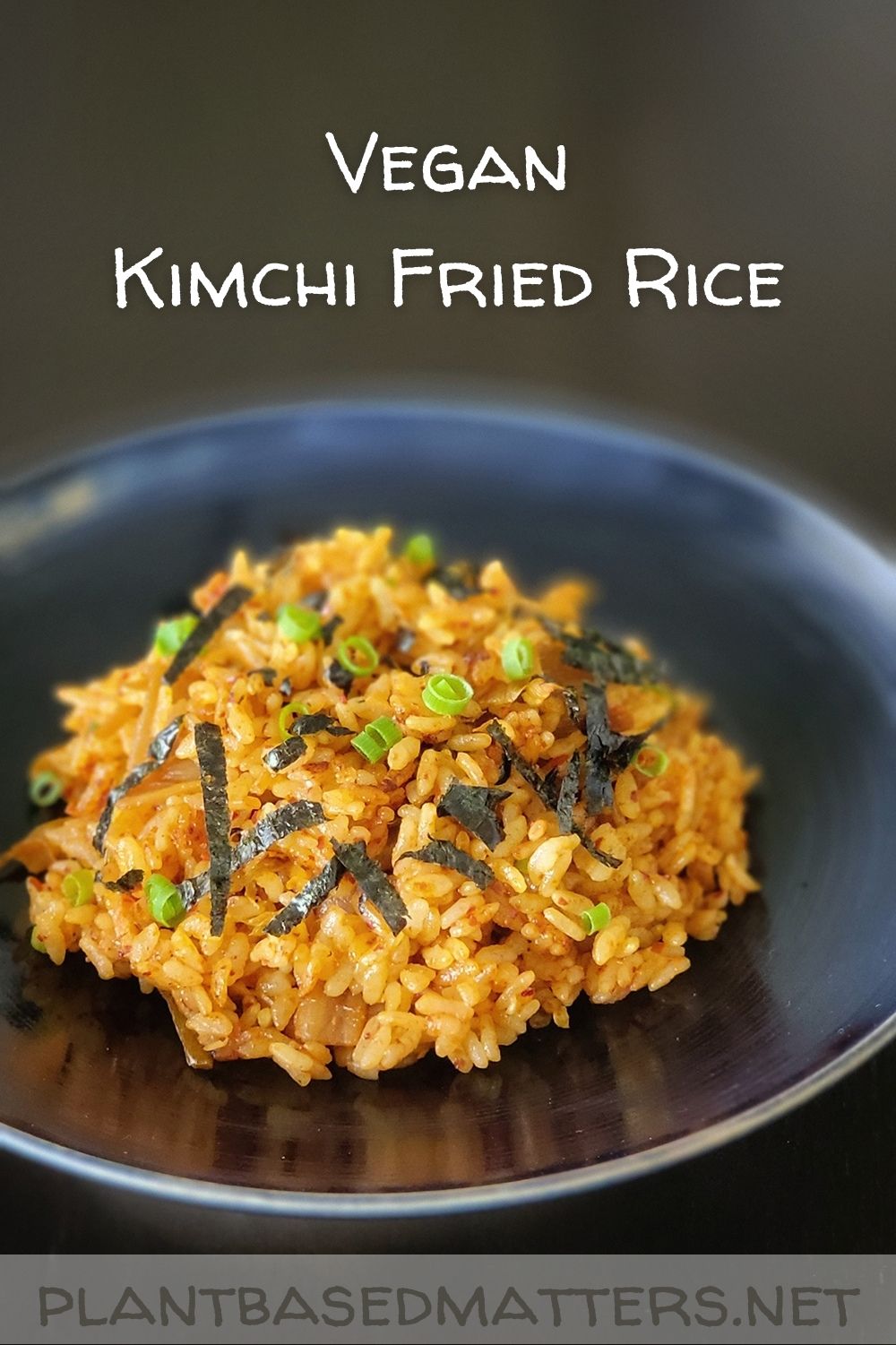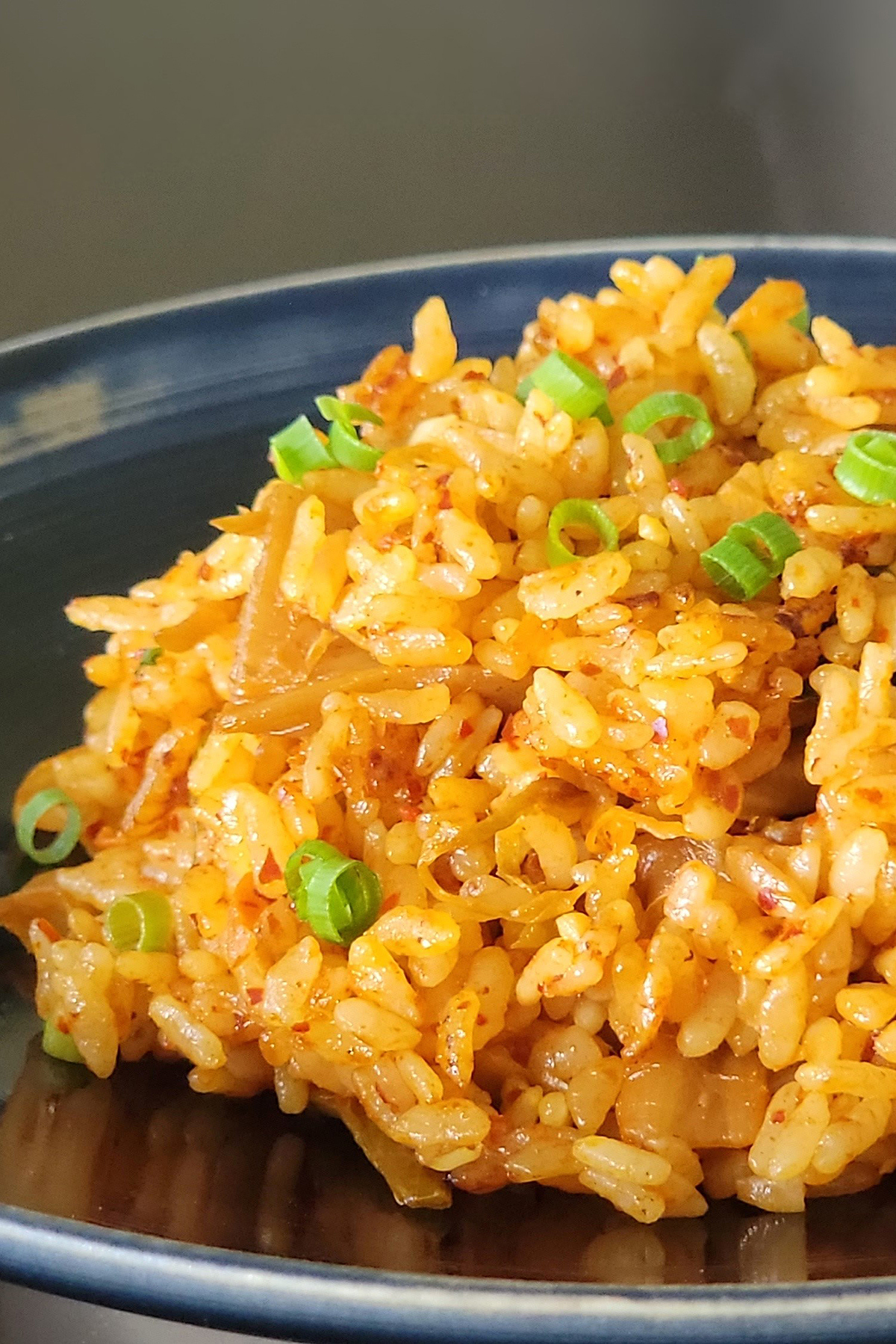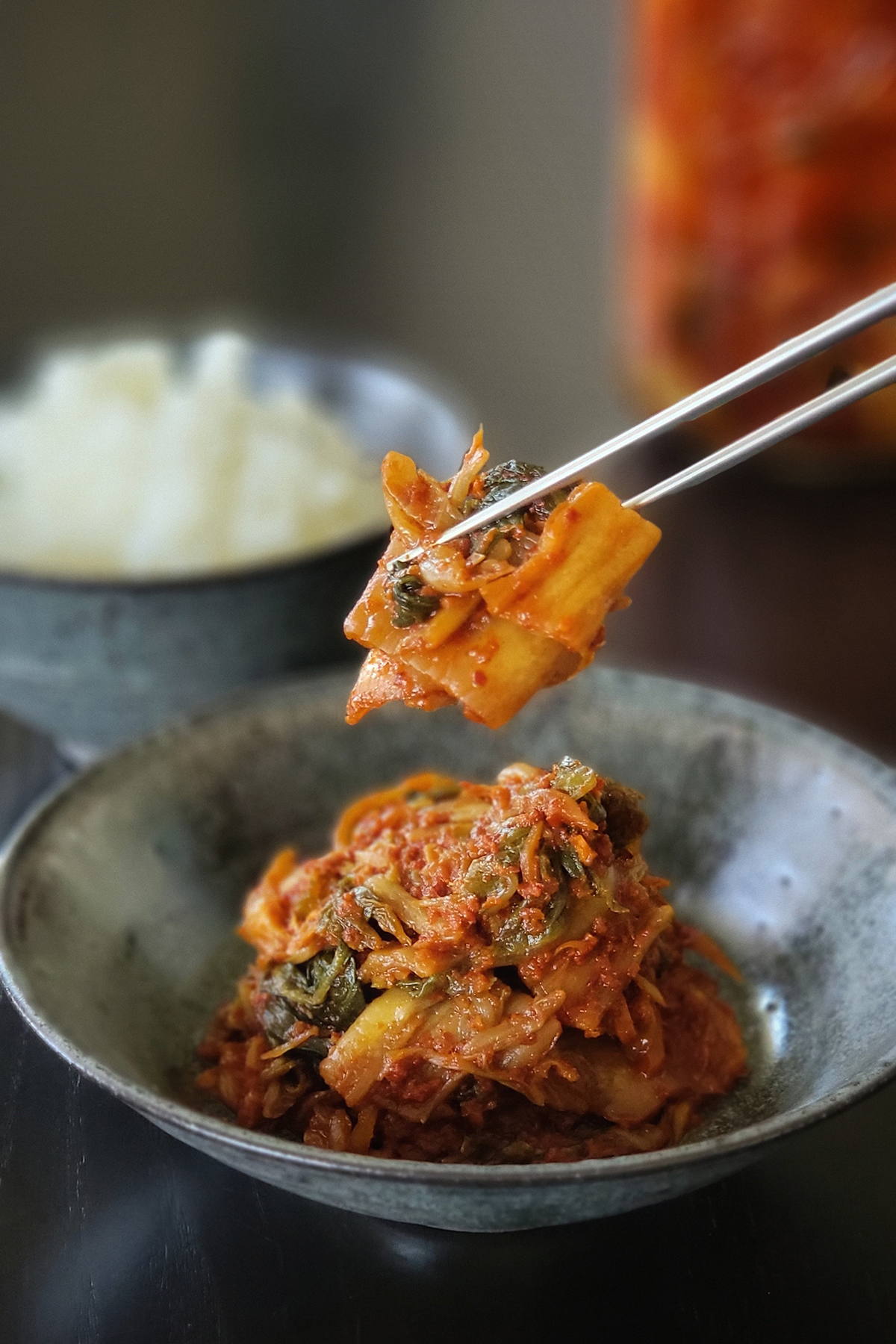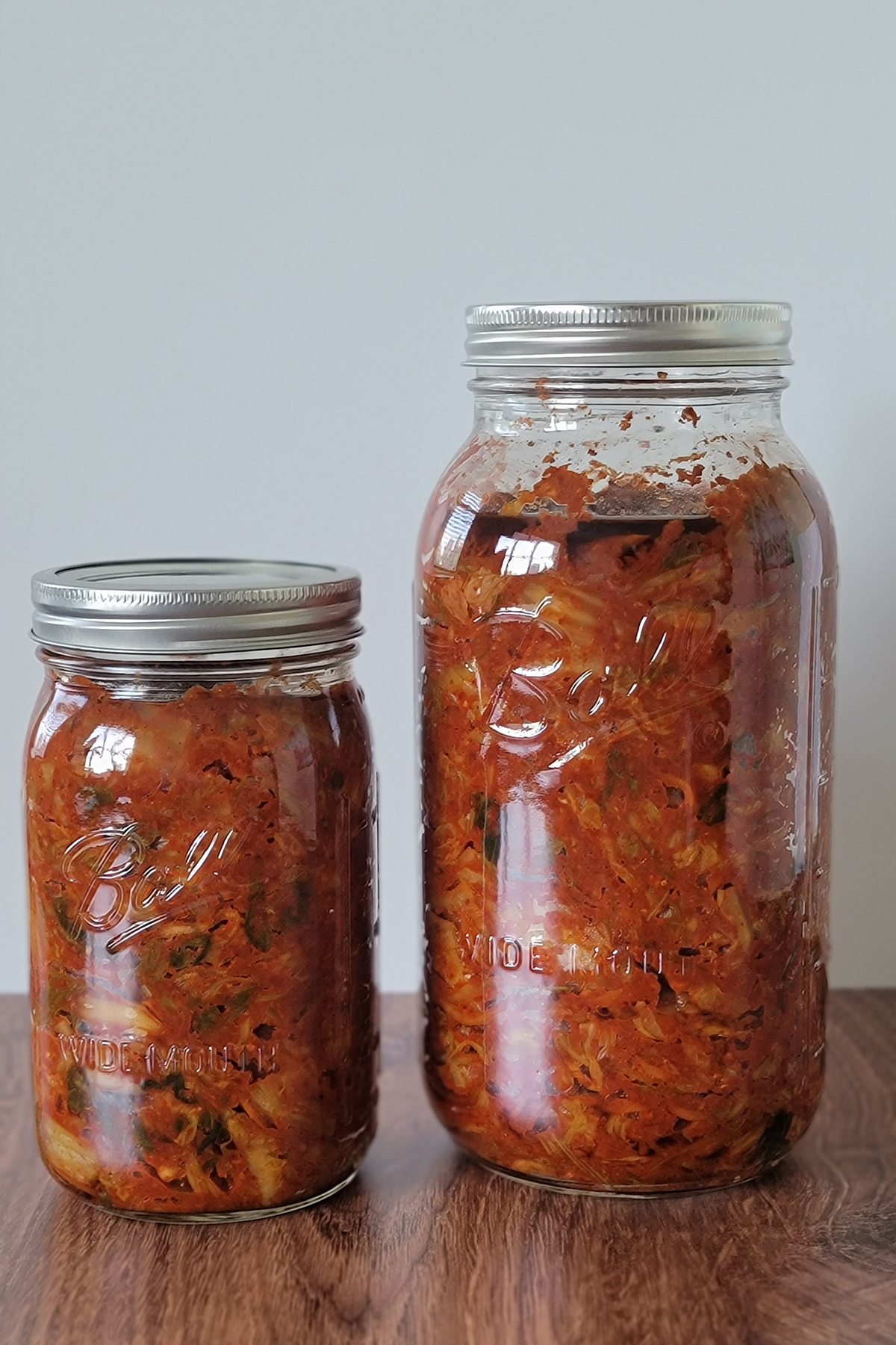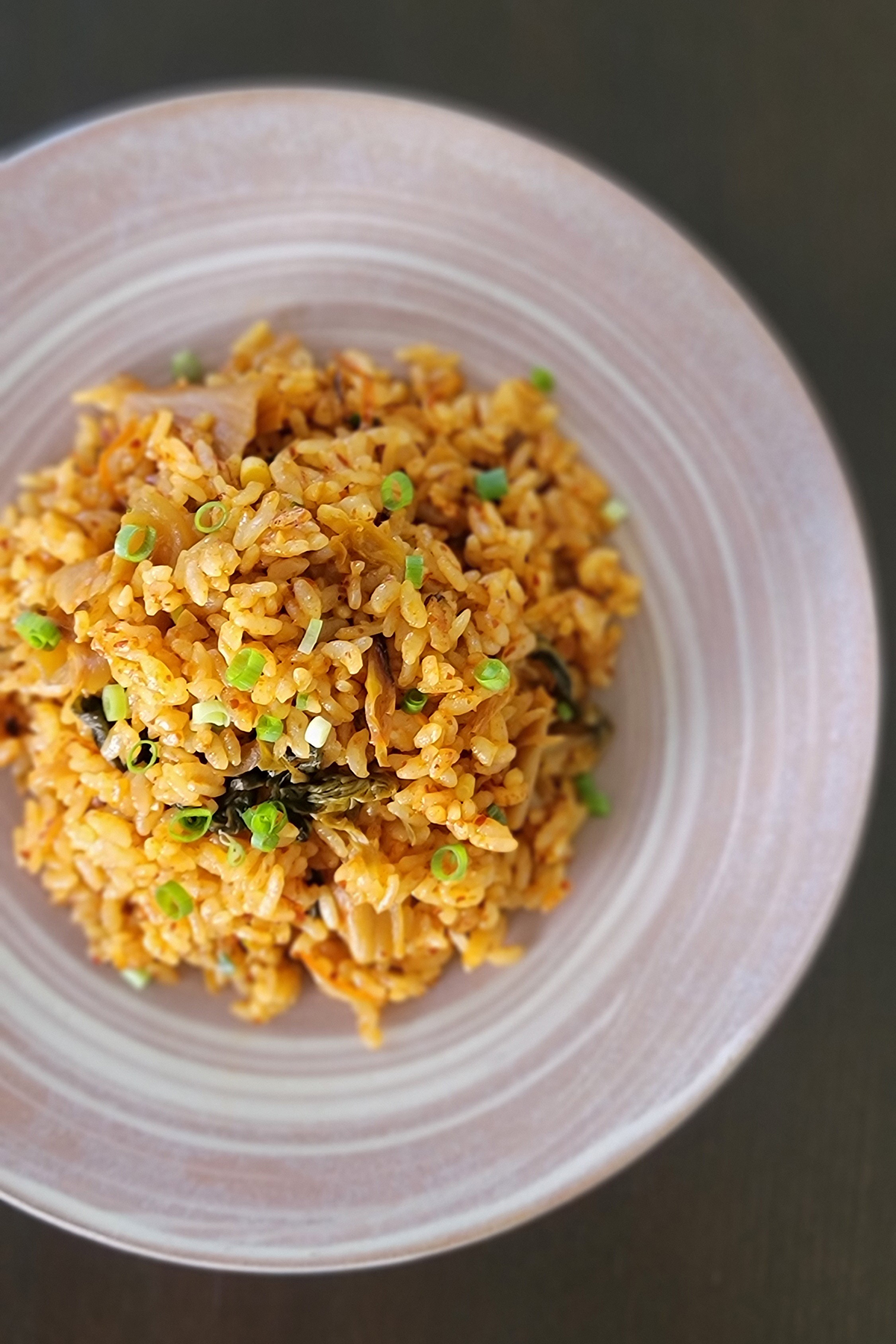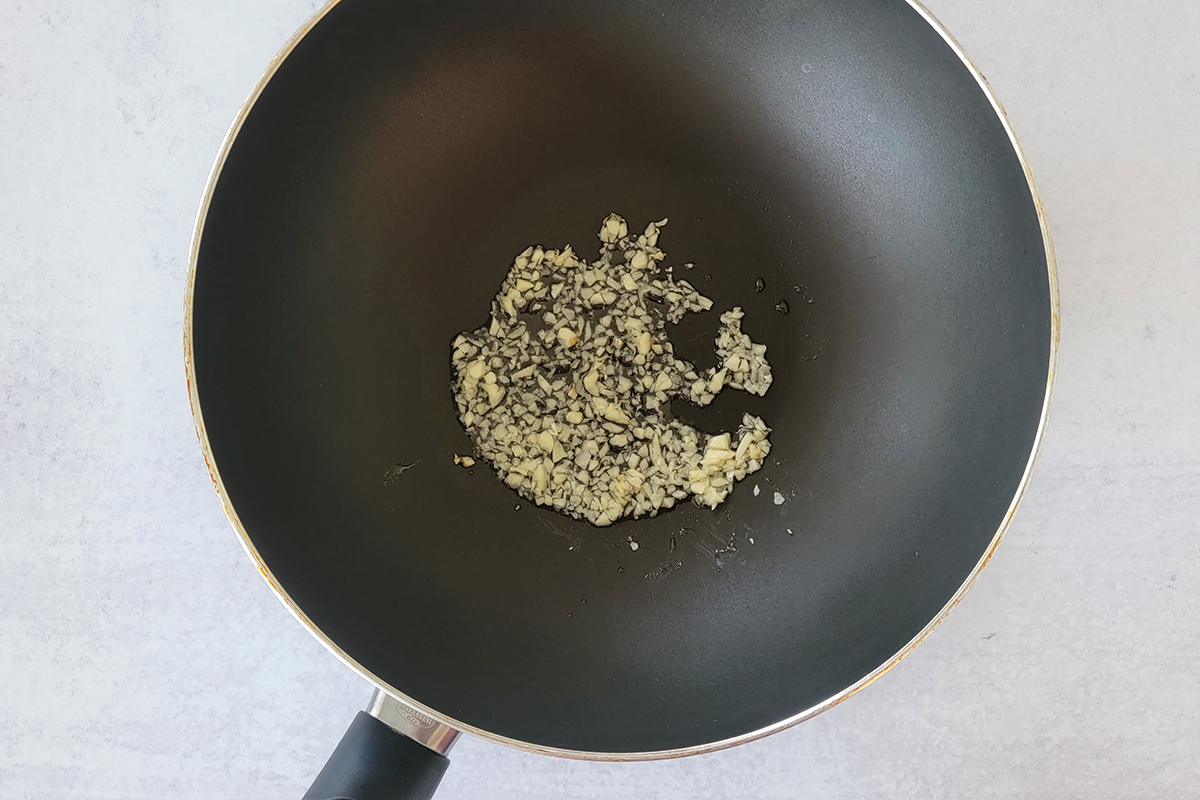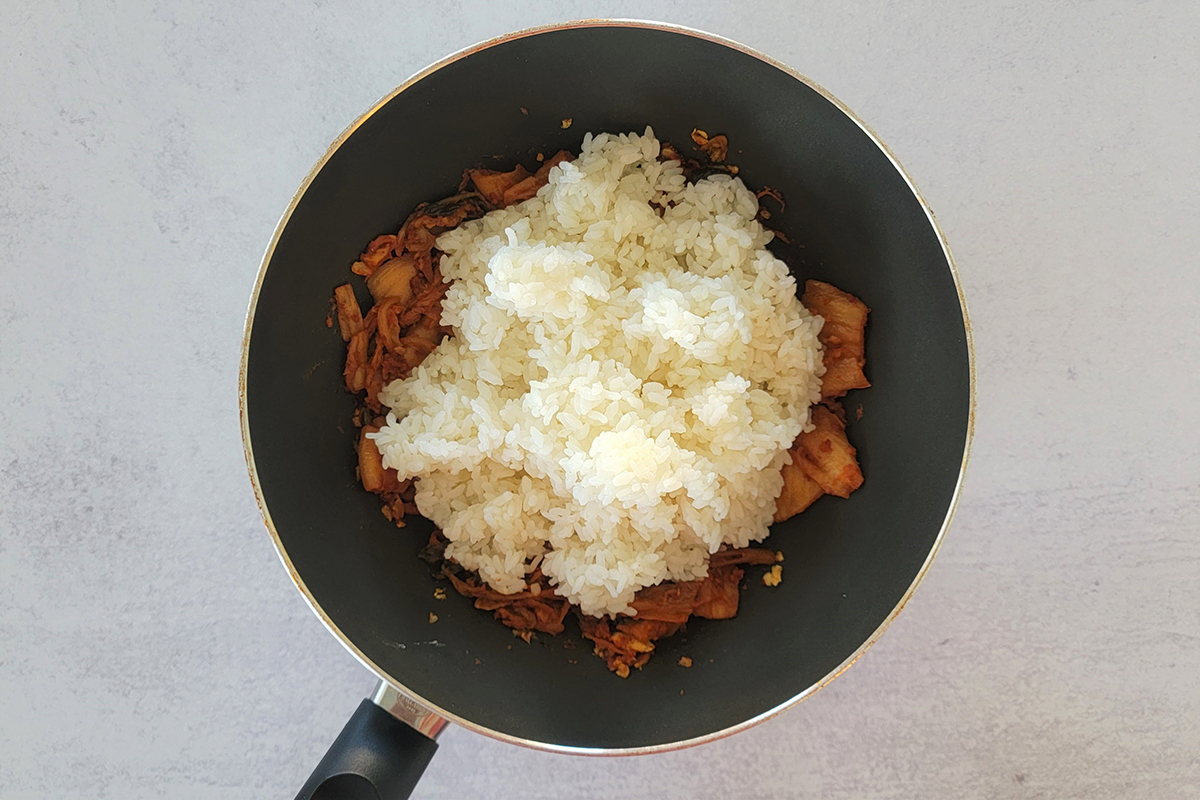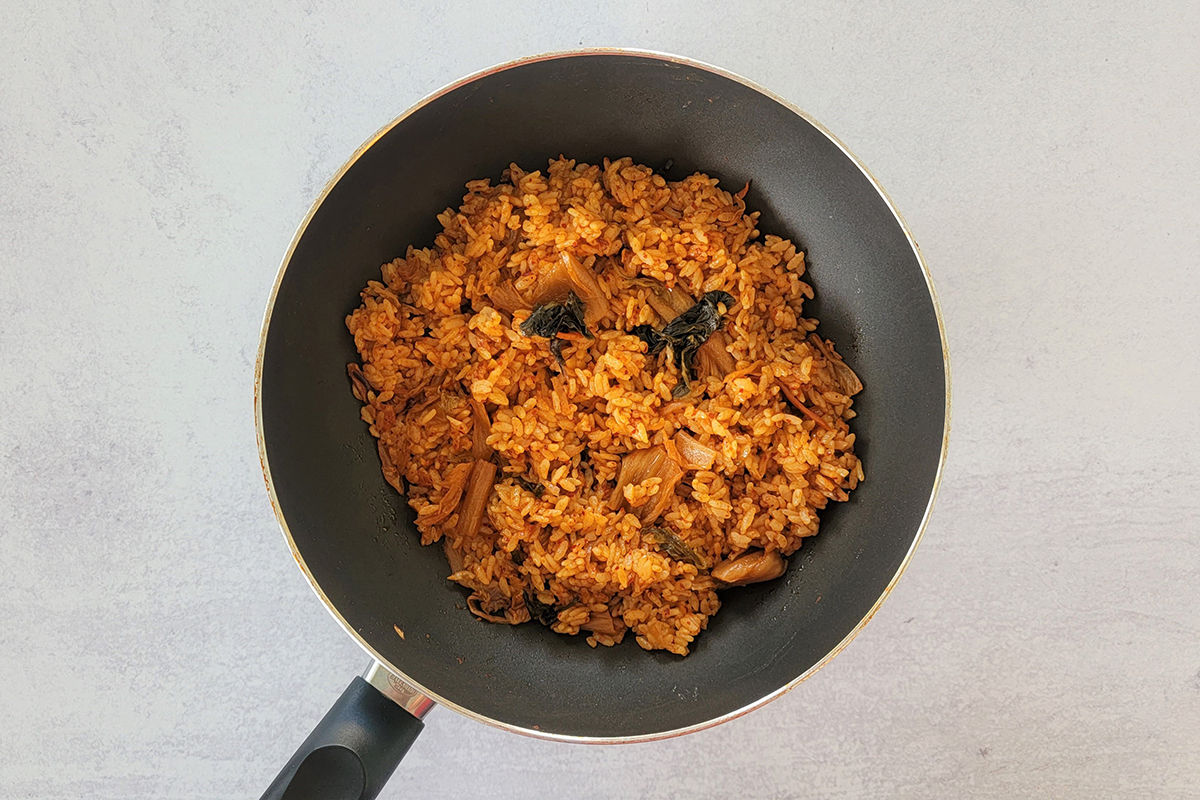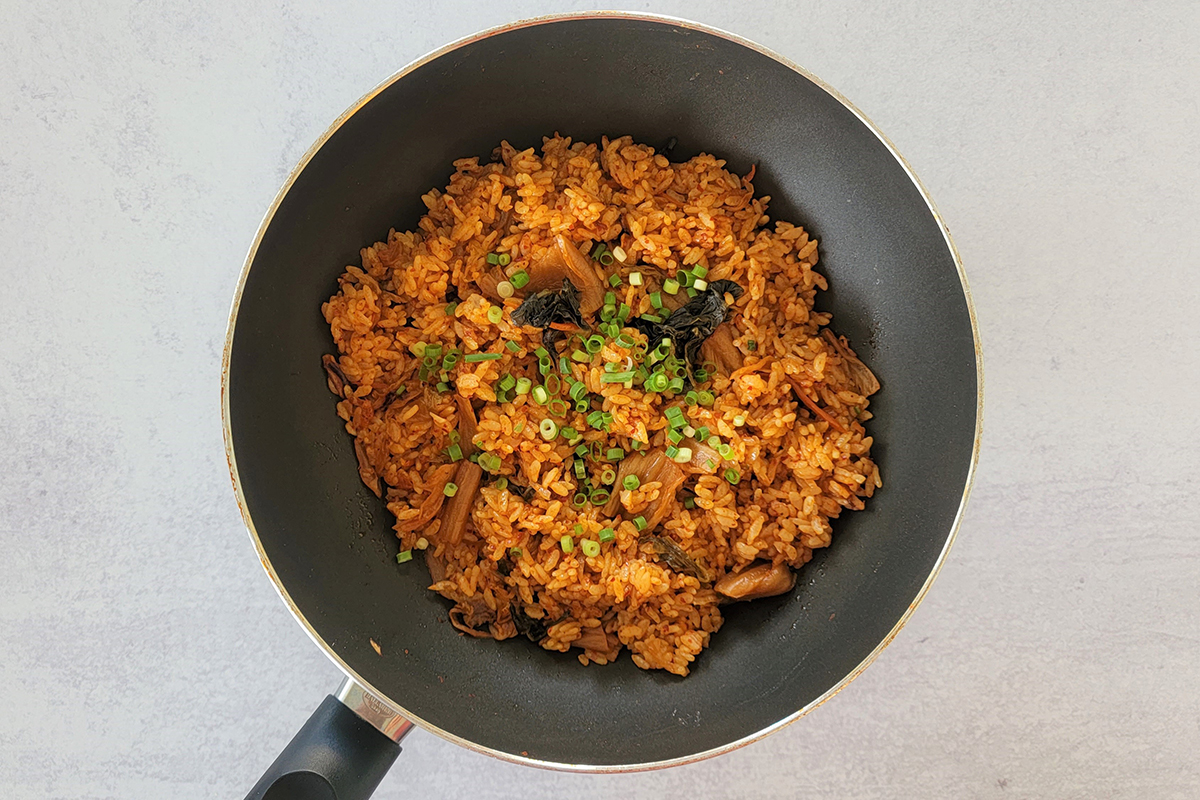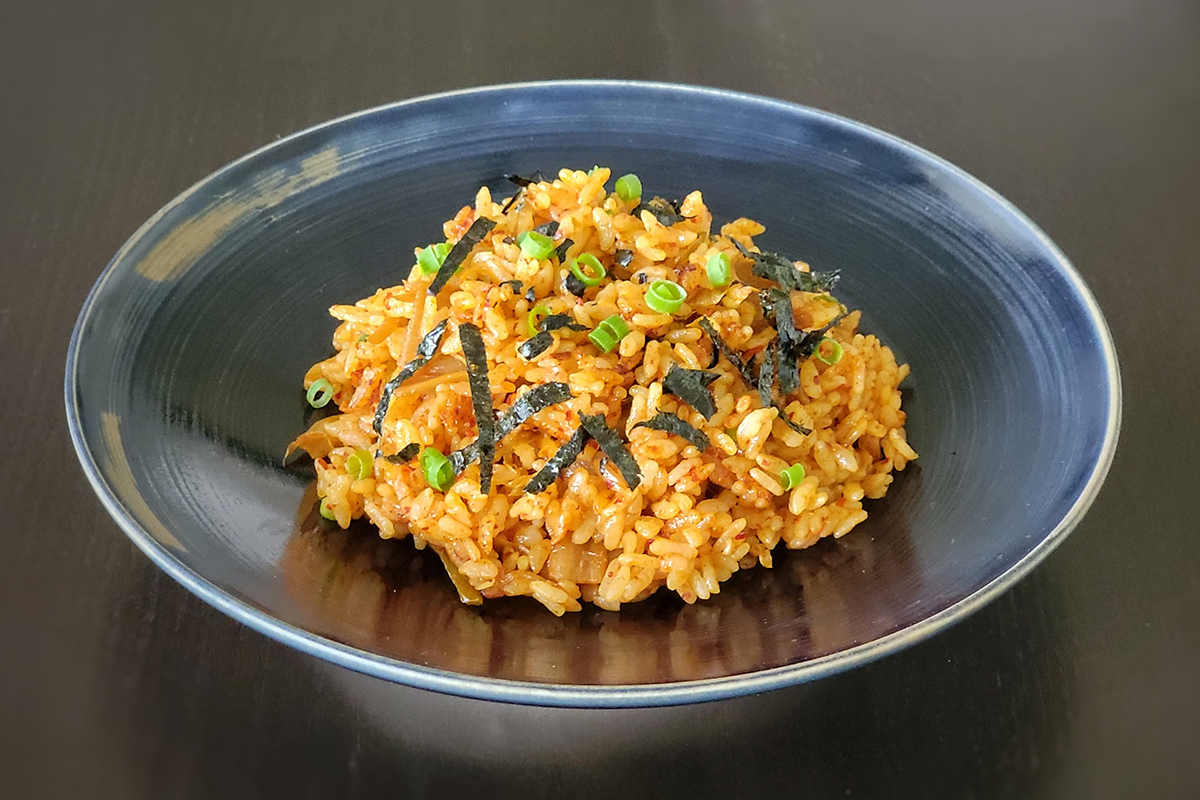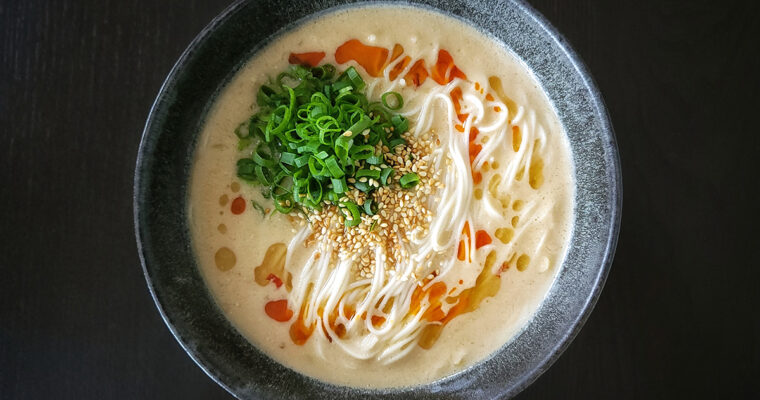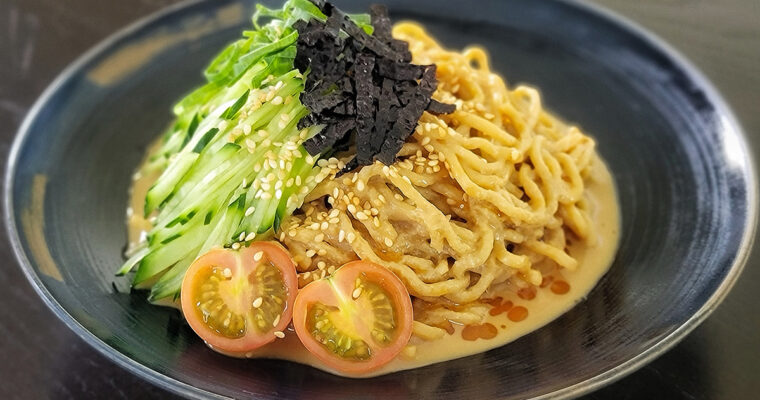Last Updated on June 3, 2023
[ヴィーガンキムチチャーハン]
Vegan Kimchi Fried Rice is Korean inspired fried rice that has a complex flavor and intense heat from vegan kimchi with a touch of toasted sesame oil. When you have some leftover rice, kimchi and gochujang, this will be ready and on the table in no time!
Inspiration
Kimchi fried rice, to me, is definitely a izakaya [居酒屋] food. Izakaya is a Japanese style bar where they serve food and drinks. When I lived in Japan, I used to go to izakaya at least once a week and the particular izakaya place nearby where I lived had the best kimchi fried rice on their menu.
What’s better than finishing with delicious fried rice (or noodles) after eating & drinking at izakaya? Yup, that’s the way it is!
Fast forward many years, I’m living in a different country and I no longer have the routine to go to izakaya but I now cook and eat the same delicious kimchi fried rice at home using my own vegan kimchi!
Vegan Kimchi
Do you buy your kimchi or make your own? I started making my own some years ago and it just keeps evolving. I have my own vegan kimchi recipe that I use. As I’m not Korean, my recipe may not be truly authentic but I love the way my vegan kimchi tastes; spicy, briny, garlicky, with very complex flavor.
Don’t worry, you don’t have to use homemade kimchi for this recipe! You can use your favorite store-bought kimchi to make this delicious vegan kimchi fried rice. As kimchi is the highlight of this recipe, you want to make sure to use good kimchi to make great fried rice.
Be sure to grab and use vegan kimchi! Yes, if you don’t check the label, your store-bought kimchi may not be vegan especially if you buy authentic kimchi from Korean market.
Another thing I have to say is that there many pretentious kimchi (sauerkraut kind) out there. I’m sure it tastes great as what it is but not suitable for making Korean inspired dishes.
You maybe wondering how to identify which one is a good option. Well, my opinion is not absolute but the rule of thumb is if it’s not made with napa cabbage, I wouldn’t recommend using it. Obviously, it the package says “kimchi-style sauerkraut” or “sauerkraut kimchi” etc., don’t use those, either.
In my opinion, homemade vegan kimchi makes the best vegan kimchi fried rice! Now is a great opportunity to try making one. It takes some time from start to finish but very easy to make and very rewarding once you taste your own homemade vegan kimchi 🙂
Be sure to check out the “Step-by-Step Instructions (w/ Photos)” after the Printable Recipe!
Vegan Kimchi Fried Rice
Ingredients
- 1/2 tbsp neutral oil
- 2 cloves garlic minced
- 1 cup vegan kimchi cut into bite size pieces
- 1 tbsp gochujang adjust to taste
- 3 cups cold day-old plain short grain rice
- 1/4 -1/2 tsp salt adjust to taste
- 1 tsp soy sauce
- 1 tsp toasted sesame oil
- 1 scallion finely chopped
- Kizami nori (shredded nori) or Korean seaweed (optional topping)
- Toasted sesame seeds optional topping
Instructions
- Heat up a large non-stick frying pan at medium-high heat. Pour neutral oil and add garlic. Cook for a minute or so until fragrant and golden brown.
- Next, add kimchi and cook for a minute. Then add gochujang and cook for another 30-60 seconds.
- Next, add cold plain rice. Use a rice paddle (or cooking utensil) to separate any lump of grains (you can add extra oil to help separating them quicker.) Mix and cook for 2-3 minutes until the rice is reheated and mixed well. Adjust the heat as necessary to avoid burning too quickly.
- Season with salt and taste it. Make sure that it is not too salty before adding soy sauce. Lastly, add soy sauce, toasted sesame oil and scallions. Give a quick stir.
- Serve and enjoy! Garnish with kizami nori or Korean seaweed and toasted sesame seeds on top (optional but highly recommended.)
Notes
Vegan Kimchi
- Be sure to look for vegan kimchi (made with napa cabbage) like my homemade Vegan Kimchi.
- Every kimchi taste different. Adjust the amount to your preference.
- Don’t use “sauerkraut type” imitation kimchi which won’t taste the same.
Gochujang
- Gochujang is Korean fermented red chili paste. It tastes spicy, savory and sweet.
- Every gochujang taste different. Adjust the amount to your preference.
- I use Gochujang (original) from Mother-in-Law's.
Choice of Rice
- For the authentic taste, use Japanese or Korean short grain rice.
- Day-old cold rice is the best for making good fried rice! Freshly made rice isn’t recommended (it’ll be mushy and wet.)
- It’s important to separate the grains with a rice paddle (or a fork) before adding to the pan and/or during cooking.
Topping Suggestions
- It’s optional but highly recommended as they enhance the overall flavor!
- Kizami nori is shredded nori seaweed which is a perfect topping for vegan kimchi fried rice.
- Korean seaweed (kim or gim) will be a great substitute to kizami nori.
- Toasted sesame seed is another great topping. It adds some nuttiness and the aroma.
Cooking Tips
- This is one of those recipes that the measurement doesn’t have to be super precise. If you have a little more/less rice, kimchi, gochujang etc., no problem! It may not taste the same as mine but it should work!
- As mentioned in “Choice of Rice”, be sure to use day-old cold rice for making great fried rice. Nothing is worse than wet fried rice…
Step-by-Step Instructions (w/ Photos)
1. Heat up a large non-stick frying pan at medium-high heat. Pour neutral oil and add garlic. Cook for a minute or so until fragrant and golden brown.
2. Next, add kimchi and cook for a minute. Then add gochujang and cook for another 30-60 seconds.
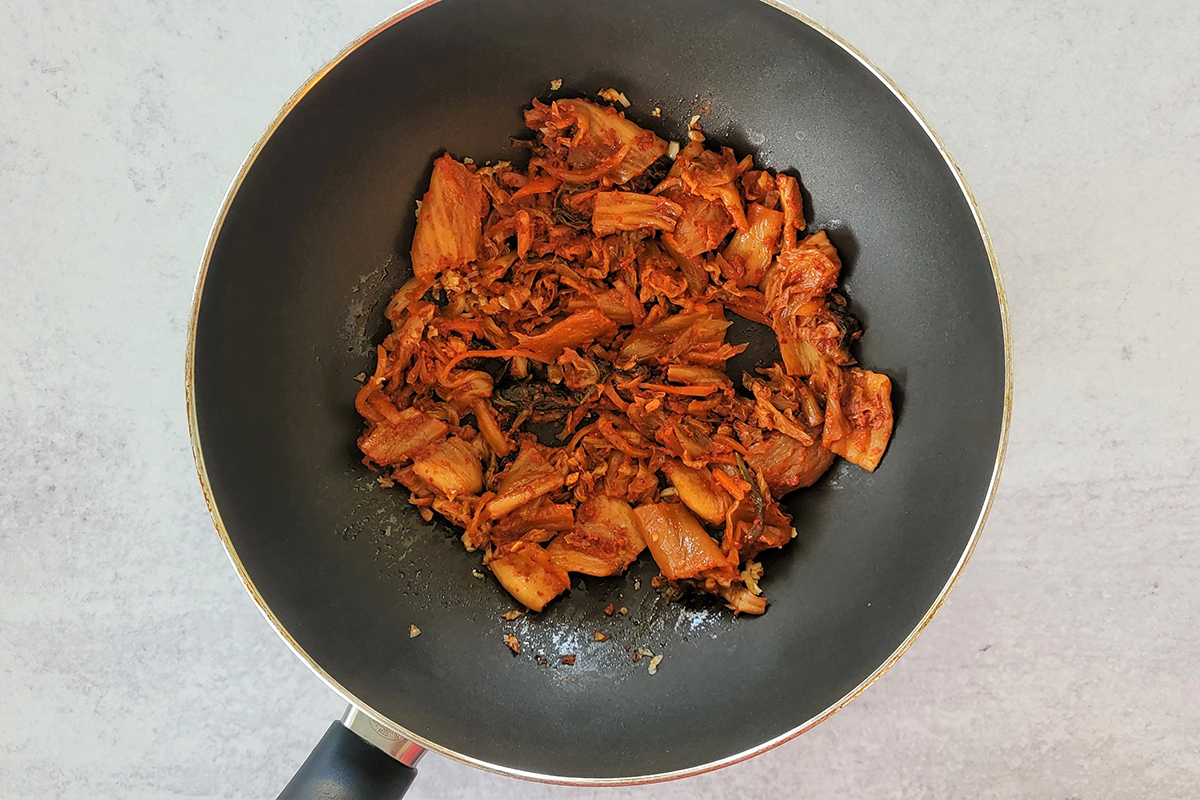

3. Next, add cold plain rice. Use a rice paddle (or cooking utensil) to separate any lump of grains (you can add extra oil to help separating them quicker.) Mix and cook for 2-3 minutes until the rice is reheated and mixed well. Adjust the heat as necessary to avoid burning too quickly.
4. Season with salt and taste it. Make sure that it is not too salty before adding soy sauce. Lastly, add soy sauce, toasted sesame oil and scallions. Give a quick stir.
5. Serve and enjoy! Garnish with kizami nori or Korean seaweed and toasted sesame seeds on top (optional but highly recommended.)
If you enjoy the recipe, please share, leave a comment below and tag us @plantbased_matters on Instagram! Your kind support will be greatly appreciated 🙂

